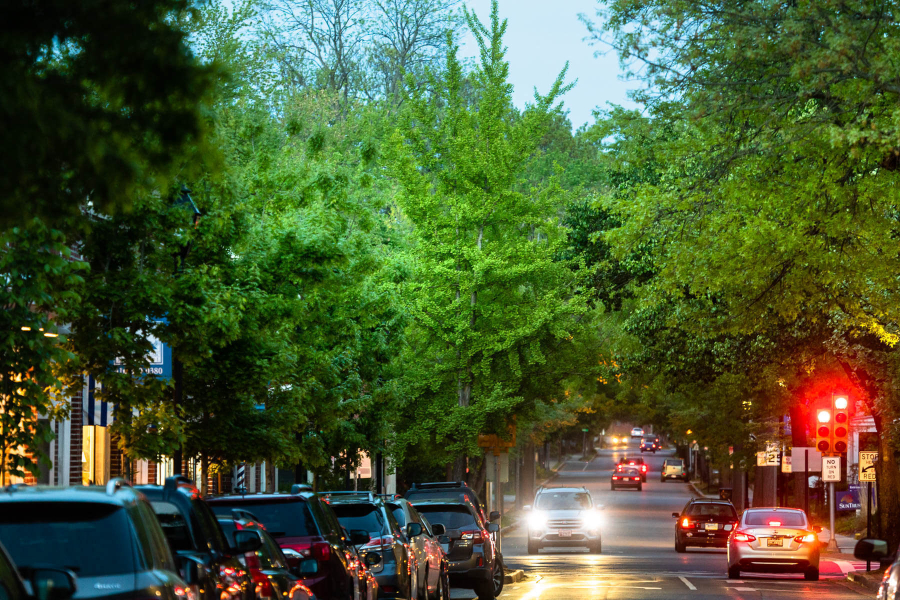Low-tech and high impact
Communities turn to trees to help with infrastructure needs

Easton is a medium-sized town on the eastern shore of Maryland, about 30 minutes from the Chesapeake Bay in one direction and Atlantic beaches in the other. A few years ago, community leaders started to look for ways in which they could reduce stormwater runoff, while at the same time helping to restore and improve the Tred Avon River, a tributary of the Bay that flows through the town.
Rather than installing an expensive gray infrastructure project, the town turned to a low-tech but effective solution: trees. Tree roots help to stabilize soil, preventing erosion and helping to soak up rain and slow down its flow into nearby rivers and streams. When trees are removed, there is nothing to help trap the rainfall, meaning that it will flow more quickly over the landscape, picking up sources of pollution like pet waste, sediment and litter that will ultimately flow into local waterways.
In 2013, with assistance from the National Fish and Wildlife Federation’s Chesapeake Stewardship Fund, Easton was able to take a look at the conditions of the town’s existing trees and tree canopy and develop a Comprehensive Forestry Program. It highlights solutions for the town’s trees and offers other green infrastructure options like bio-retention features and converting turf to trees, to help improve the overall water quality for the community. This coordinated effort allowed the town to plant trees in areas that would provide the most benefits to the community.
It’s not just about controlling stormwater runoff—the additional benefits trees offer is endless. For a town like Easton, the most notable advantage is how they can help the local economy:
- As a changing climate increases temperatures across the watershed, trees act as natural cooling units thanks to the shade they provide, lowering overall energy usage and costs.
- Studies have shown that trees increase residential property values by an average of seven percent.
- As trees add to both the attractiveness and safety of a community, they can help attract tourism to the area.
- Trees help improve air quality, saving on medical expenses for air-borne diseases and allergies.
Easton is looking to increase its current tree canopy from 27 percent to between 35 to 40 percent in the next 40 years; that translates to around 30,360 trees will be put into the ground on both private and public lands over the next decade. Their actions also help the Chesapeake Bay Program as well—in the Chesapeake Bay Watershed Agreement, our partners agreed to continually increase urban tree canopy by 2,400 acres by 2025.
Check out the Chesapeake Tree Canopy Network to learn more about how trees can benefit communities.

Comments
There are no comments.
Thank you!
Your comment has been received. Before it can be published, the comment will be reviewed by our team to ensure it adheres with our rules of engagement.
Back to recent stories